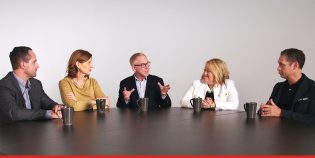Are you ready to watch everyone’s jaw drop at your awesome knowledge about content marketing? Next time you hear one of your colleagues say “we should really do more branded content”, bring out these seven handy stats and you’ll be adding Brand Editor to your business cards in no time.
First off, let’s define the term. You’ll hear Content Marketing used synonymously with lingo such as native advertising, sponsored content, branded content or custom content. These seemingly interchangeable buzzwords are creeping into every marketer’s boardroom and every publisher’s newsroom these days. Content Marketing is actually the umbrella term that encompasses all of the above.
The way we describe it at Pressboard is simply “Stories, instead of ads”. With that in mind, here are seven things you may not know about one of marketing’s fastest growing trends.
It’s been around for a very long time
Content marketing isn’t new. In fact, John Deere published the very first issue of “The Furrow”, a branded content magazine targeting farmers, way back in 1895. Over a century later banner blindness and the onslaught of ad blockers has renewed content marketing’s priority in the marketer’s toolkit.
The term “native advertising” was invented by an investor, not a marketer
It was first coined by Fred Wilson at the Online Media, Marketing, and Advertising Conference in 2011. Since then the term has gained steam and often encompasses everything from paid social media ads, to search listings, to in-feed ads on news sites.
Facebook is king at content discovery
According to our marketplace analysis of 100 top North American publishers, the #1 traffic source to branded content is Facebook. By a long shot. The social network contributes to 52% of all traffic to stories, compared to only 9.7% coming directly to the article from a homepage. With the introduction of Facebook’s Instant Articles we are now even seeing the early stages of native publishing.
Content sharing is a 24-7 gig
Social media management is no 9 to 5. We’ve learned that each social network has its own ideal times to post. Facebook posts, for example, perform better on Thursday and Friday afternoons and on the weekends. With LinkedIn, on the other hand, Tuesday mornings are ideal. These times provide the ideal inflexion point, where both high levels of usage and low levels of competing content are in sync.
The average sponsored post is 702 words in length
We analyzed over 500 pieces of custom content created through Pressboard’s marketplace and found that 90% of text based articles are between 500-900 words in length and include an average of 3 images.
Humans have a lower attention span than goldfish
At 8.5 seconds of attention (0.5 sec less than your standard guppy), your story headline needs to carry a lot of weight. The average story headline is 6-8 words in length and should create a “curiosity gap” that leaves the reader wanting more. Great headlines however mustn’t be confused with click bait, where the content itself fails to deliver on the headline’s promise. With that in mind, the value of the engagement should be focused not on clicks alone but on measuring the attention paid to the story itself.
A Read is worth 1000 impressions
The average Click Through Rate on native ad units is anywhere from 0.1% – 0.8% depending on the campaign. That means that it can take up to 1000 impressions to generate a single click. We have found those clicks only turn into reads of the article about 75% of the time. Put it all together and you’ll need up to 1,300 native ad or social impressions to generate each read for your content. Impressions were made for display ads, not stories. All stories in the Pressboard marketplace transact entirely on guaranteed reads and views.
After all that’s what content marketing is all about. Great stories that people want to read, share and act upon. Now go show off your newly acquired content cred.











